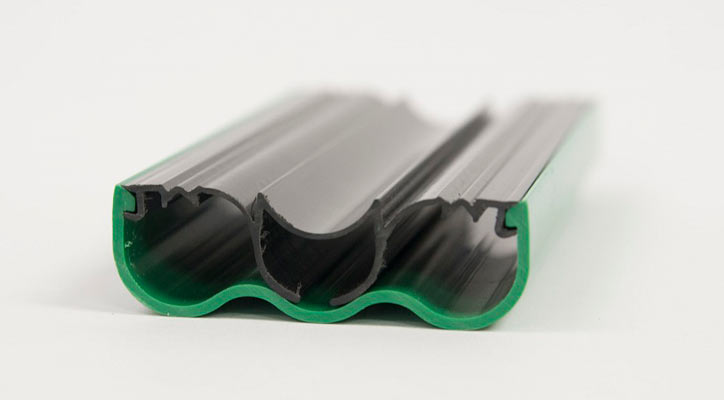Extrusion is a process which is commonly used in the manufacturing industry where length is the p
rime focus in a constant cross sectional item.
The extrusion prototyping typically for manufacturing industry is usually a highly economical method even after including the post
vowin.cn/en/News/news1251.html' target='_blank'>
machining cost to add fixing points, threads or access panels. Since there is tooling required, it is not the same as injection mould tooling, which makes this method quicker and significantly cheaper manufacturing method. However, manufacturing prototypes following extrusion technique for short run projects can be challenging. But there are several dedicated manufacturers who provide proficient
extrusion prototyping services in China.
It is majorly used for both plastic and aluminium based prototyping in order to produce a variety of components such as conduits, pipes, window frames, and much more.
To get into details, we will discuss plastic and aluminium separately.
Aluminium Based Extrusion Prototyping
One can do wire eroding with the help of aluminium and this is why it is the most commonly used material. Aluminium wire eroding is best if the required part is of 600mm in length. Due to the relatively slow process, the wire becomes very fine which in result provides great detail and surface finish.
If the length requirement for the part is longer than 600mm but still the form is simple, it would be possible to use CNC (Computer Numerical Control) machine to stretch the prototype up to 1 meter. However, it an extremely sensitive method to follow for geometrical wall sections and would not be applicable in all kind of manufacturing cases.

The other option of extrusion prototyping is to actually extrude the section, where a development die is essential to be produced. This will not only access to an extrusion line but also require additional lead-time, so it would typically take 4 – 5 weeks in contrast with ‘10 days’ for a wire eroded length.
There will also be some limitations to size, because to manufacture a batch of prototypes, the larger size extrusion lines are simply not economical at all. The extrusion produced is usually not more than 20 meters and is generally a trial batch to validate the die.
Plastic Based Extrusion Prototyping
When we talk about plastic based extrusion, the most common and widely extruded material is PVC (Poly Vinyl Chloride). However, while other manufacturing materials are also available in production quantities, yet it isn’t easy finding suppliers willing to run prototype sized batches.
Opposing aluminium, plastic is not at all an option to wire eroding samples. If the required form is simple,
CNC machining remains viable up to around 1 meter in length.
As plastic-based products are high in demand due to its low cost, there are several manufacturers who are capable of manufacturing any plastic profile that one can imagine about, from extremely simple to intricate shapes in a variety of high-grade engineering and commodity materials such as Polyethylene with low and high density, rigid and flex
ABS, PVC, Polypropylene, High Impact Polystyrene, Thermoplastic Elastomers, Polycarbonate, and several other thermoplastic extrusion materials.



